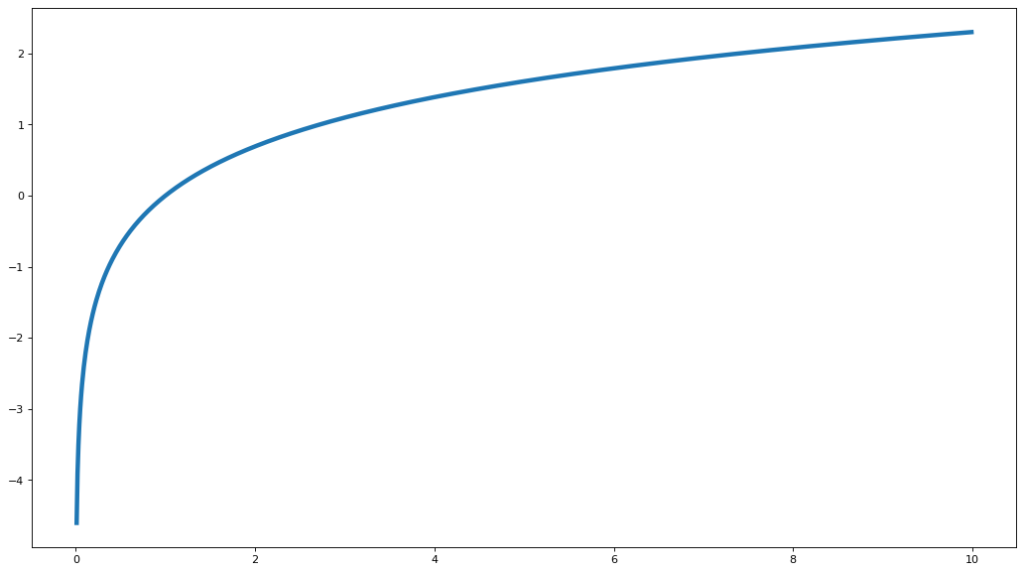The logarithm is a mathematical function that is related to the power function. The power function takes a number and multiplies it by itself a number of times, like 2 to the 2nd power (22) is 4 or 10 to the 3rd power (103) is 1000. The logarithm is the reverse of that. It’s kind of like asking “how many times to I have to multiply this base number by itself to get this answer?”. For example, log10(1000) = 3 and log2(4) = 2.

The most common logarithms are base-2, base-10, and the natural logarithm, often written as ln, for logarithmus naturalis, the Latin term for it. The natural log uses base e, a special mathematical constant like pi, π.

You might be familiar with log-based functions if you know what decibels are or know about the Richter-scale for earthquakes. Even spacing on the scale represents exponential differences in magnitude. For example, so every 10 decibels is a 10 times increase in sound energy, so a passing car at 70dB has 10 times the sound energy as a loud as restaurant ambience at 60dB and 100 times that of a quiet conversation at 50dB.
Useful Features of Logarithms
Logarithms have a couple properties that come in handy. The first
One is that they are a monotonically increasing function. This means